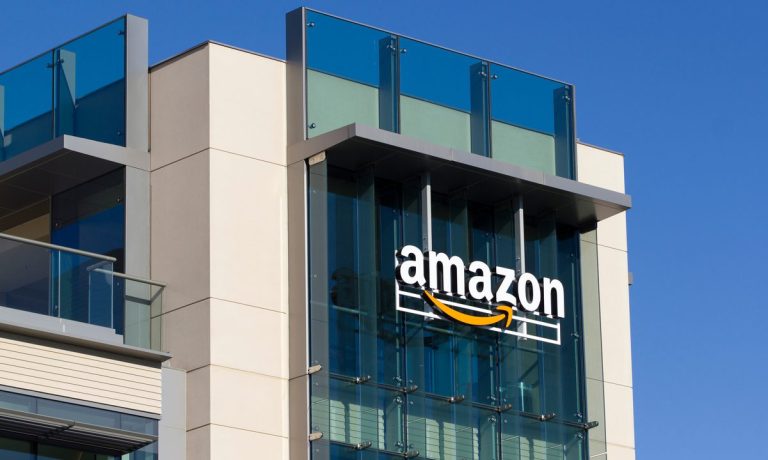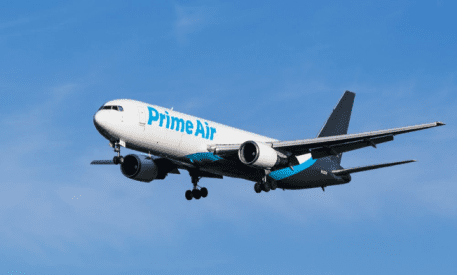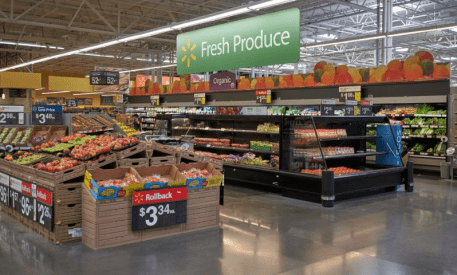AMZN vs WMT Weekly: Staggering Into Earnings, It’s Time to Ask, ‘What Could Go Right?’

By this time next week, we will have half the answer to a roughly $300 billion question, after Amazon has reported its fourth-quarter earnings results on Feb. 3. Ahead of that milestone, the past two months have been nothing short of brutal for the eCommerce giant, as its stock has fallen 25% since mid-November, shedding roughly $400 billion — or the equivalent of Walmart — in market value along the way.
The dive is not only the shortest, sharpest correction Amazon has faced in at least a decade, it also may have nothing to do with its core underlying retail businesses, which appear to be healthy, growing and dominant.
As such, Amazon could be poised to change the narrative when it updates investors on how it did during the most important retail quarter of the year, that is, depending on the mood and mindset of investors who interpret them.
Not unlike a Rorschach inkblot, retail analysts and industry observers will see Amazon’s results the way their particularly biased minds are currently skewed: the pessimists will see canyons instead of cracks, the optimists will overlook warnings with wonder.
By the time Walmart — whose more defensive nature and stock have largely escaped the recent downdraft — reports its own results two weeks later on Feb. 17, the “Amazon slide” could be a distant memory or the start of something much more serious.
The truth is, we just don’t know, but that imperfectly perfect real-time scorekeeping system known as the stock market will be doing its best to shape our opinions and turn black-and-white results into a jaded technicolor tapestry of short-term interpretation.
If the present mindset is still in place a week from now, no amount of share-swiping growth or retail industry innovation by Amazon will be able to change it. If sentiment has changed by then, shares of the Seattle-based global eCommerce leader will get snatched up quicker than a designer shirt on the clearance rack.
What’s in Store
Ahead of this pair of reports — as well as those of hundreds of other publicly traded companies in every imaginable industry — the two titans of retail continue to tinker with their physical spaces in hopes of perfecting the store of the future.
For Walmart, that store of tomorrow is being built under the unusual “Time Well Spent” banner, as the Arkansas-based retail giant moves forward with a suite of interactive in-store upgrades ranging from digitally “activated corners” to space enhancements and elevated brands.
“In this next phase of our redesign, we’re amplifying the physical, human and digital design elements in our stores to inspire customers and elevate the experience,” Walmart Store Design, Innovation and Experience lead Alvis Washington wrote in a company blog post announcing the initiative.
“In today’s omnichannel world, customers still want to experience — touch, feel and try — items,” Washington said, noting Walmart’s intention to “make customers feel wowed and proud when they shop with us.”
Two time zones away in the affluent Seattle suburb of Mill Creek, Amazon is busy bringing its “Just Walk Out” touchless tech to frictionlessly aid the hurried habits of consumers on the go.
By eliminating the need for scans of checkout, Amazon said its customers can “quickly and conveniently shop from an expanded selection of tasty, ready-to-eat food items and grab-and-go beverages and snacks in their own neighborhood,” adding that it was excited to expand its Amazon Go store portfolio and format.
“We think local residents and commuters will enjoy the ease of our Just Walk Out shopping,” the company said.
Planes, Trains and ESG
On the more futuristic front, Amazon unveiled a pair of projects to serve other types of consumers on the go, including the debut of its daily air freight service between Wichita and Fort Worth. The 350-mile straight shot shuttle marks the latest milestone in Amazon’s efforts to use aviation to close gaps in the completion of its increasingly fast final mile delivery mandate.
 “Amazon Air now serves more than 45 airports within 100 miles of more than 70% of the U.S. population — including 10 new destinations and 24 aircraft added in the last year or so,” the report said, noting that the Wichita project follows the establishment of its primary package hub in Lexington, Kentucky that opened last August.
“Amazon Air now serves more than 45 airports within 100 miles of more than 70% of the U.S. population — including 10 new destinations and 24 aircraft added in the last year or so,” the report said, noting that the Wichita project follows the establishment of its primary package hub in Lexington, Kentucky that opened last August.
For those with their feet more firmly on the ground, Amazon’s other transport undertaking might be more useful. This as Amazon announced the nationwide rollout of its Alexa Public Transit feature, which gives users status updates and other tidbits from over 400 public transportation systems across the country. If nothing else, the system is a contrarian indicator on commuting, as it comes at a time of record numbers of people that are working from home and avoiding rush hour all together.
Whether you commute to work or not, one thing that’s never going away is the need to eat, and on this front, the country’s largest seller of groceries is making moves to shore up its supplies in a healthy and sustainable way. To that point, Walmart’s undisclosed stake in vertical or indoor farming firm Plenty points to a leaner, greener future and the multiple benefits that sustainability carry.

“We believe Plenty is a proven leader in a new era of agriculture, one that offers pesticide-free, peak-flavor produce to shoppers every day of the year,” Walmart U.S. Chief Merchandising Officer Charles Redfield said in a press release.
With the investment, Walmart is joining the startup’s board of directors, and the retailer will be bringing Plenty’s produce into all 320 of its California stores later this year.